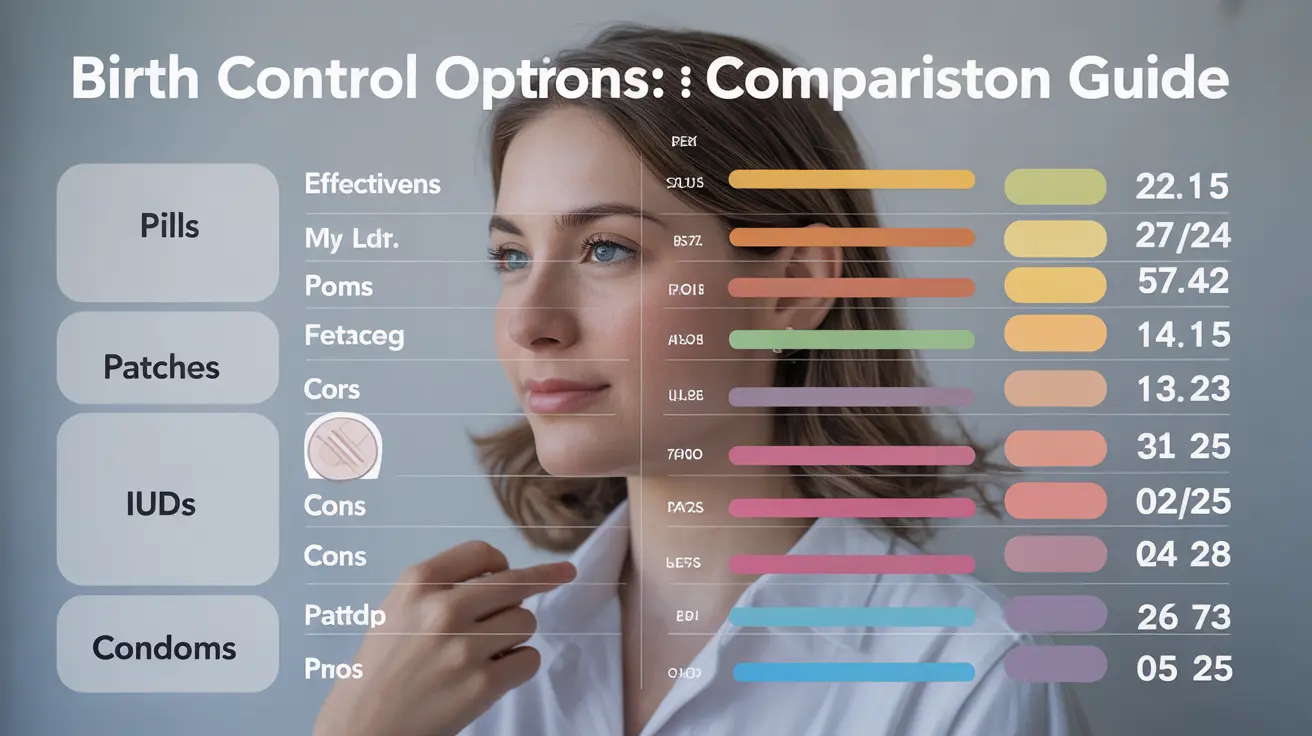Making an informed decision about birth control is crucial for your reproductive health and lifestyle. Understanding the key differences between hormonal and non-hormonal birth control methods can help you make the best choice for your body and circumstances.
This comprehensive guide explores both types of contraception, their effectiveness, benefits, and potential drawbacks to help you make an educated decision about your birth control options.
Understanding Hormonal Birth Control Methods
Hormonal birth control works by using synthetic hormones to prevent pregnancy. These methods typically contain estrogen, progestin, or both, and work through various mechanisms to prevent conception.
Common Types of Hormonal Contraception
Several hormonal birth control options are available:
- Birth control pills (combined or progestin-only)
- Hormonal patches
- Vaginal rings
- Hormonal IUDs
- Injectable contraception
- Hormonal implants
Benefits of Hormonal Birth Control
Hormonal contraceptives offer several advantages beyond pregnancy prevention:
- Regulated menstrual cycles
- Reduced menstrual cramping
- Improved acne
- Decreased risk of certain cancers
- Management of conditions like PCOS and endometriosis
Potential Side Effects
While effective, hormonal methods may cause:
- Mood changes
- Weight fluctuations
- Breast tenderness
- Headaches
- Changes in libido
- Spotting between periods
Non-Hormonal Birth Control Options
Non-hormonal birth control methods provide alternatives for those who cannot or prefer not to use hormonal contraception. These methods work through different mechanisms to prevent pregnancy.
Types of Non-Hormonal Contraception
Common non-hormonal options include:
- Copper IUD
- Male and female condoms
- Diaphragms
- Cervical caps
- Spermicides
- Natural family planning methods
Advantages of Non-Hormonal Methods
Non-hormonal contraception offers distinct benefits:
- No hormonal side effects
- Immediate return to fertility upon discontinuation
- Some methods provide STI protection
- Options for those with hormone-sensitive conditions
- No interference with natural hormone cycles
Effectiveness Comparison
Understanding the effectiveness rates of different methods can help inform your decision:
- Hormonal methods: 91-99% effective with perfect use
- Copper IUD: Over 99% effective
- Condoms: 85-98% effective with perfect use
- Natural family planning: 76-88% effective with perfect use
Frequently Asked Questions
What are the differences between hormonal and nonhormonal birth control methods?
Hormonal methods use synthetic hormones to prevent pregnancy by stopping ovulation, thickening cervical mucus, or thinning the uterine lining. Non-hormonal methods use physical barriers, copper (IUD), or natural timing to prevent pregnancy without affecting hormones.
How effective are common nonhormonal birth control methods, such as condoms and copper IUDs?
Copper IUDs are highly effective, with a 99% success rate. Condoms are about 98% effective with perfect use but closer to 85% with typical use. Other non-hormonal methods vary in effectiveness, with proper usage being crucial for optimal results.
What are the benefits and potential side effects of using hormonal birth control, such as the pill or patch?
Benefits include reliable contraception, regulated periods, and management of certain health conditions. Common side effects may include mood changes, headaches, and breast tenderness. Some users experience positive effects like clearer skin and lighter periods.
Can nonhormonal birth control methods, like condoms, also prevent sexually transmitted infections (STIs)?
Yes, barrier methods like male and female condoms are the only birth control options that also protect against STIs. Other methods, including hormonal contraception and IUDs, do not provide STI protection.
How do I choose between hormonal and nonhormonal birth control based on my health needs and lifestyle?
Consider factors such as medical history, lifestyle, convenience, cost, and personal preferences. Discuss options with your healthcare provider, who can help evaluate potential contraindications and recommend the most suitable method based on your individual circumstances.




